World 🢖 Europe 🢖 Latvia 🢖 Kurzeme
Waterfalls 🢔 Geological wonders 🢔 Categories of wonders
Wonder
Staldzenes Waterfall (Staldzenes ūdenskritums)
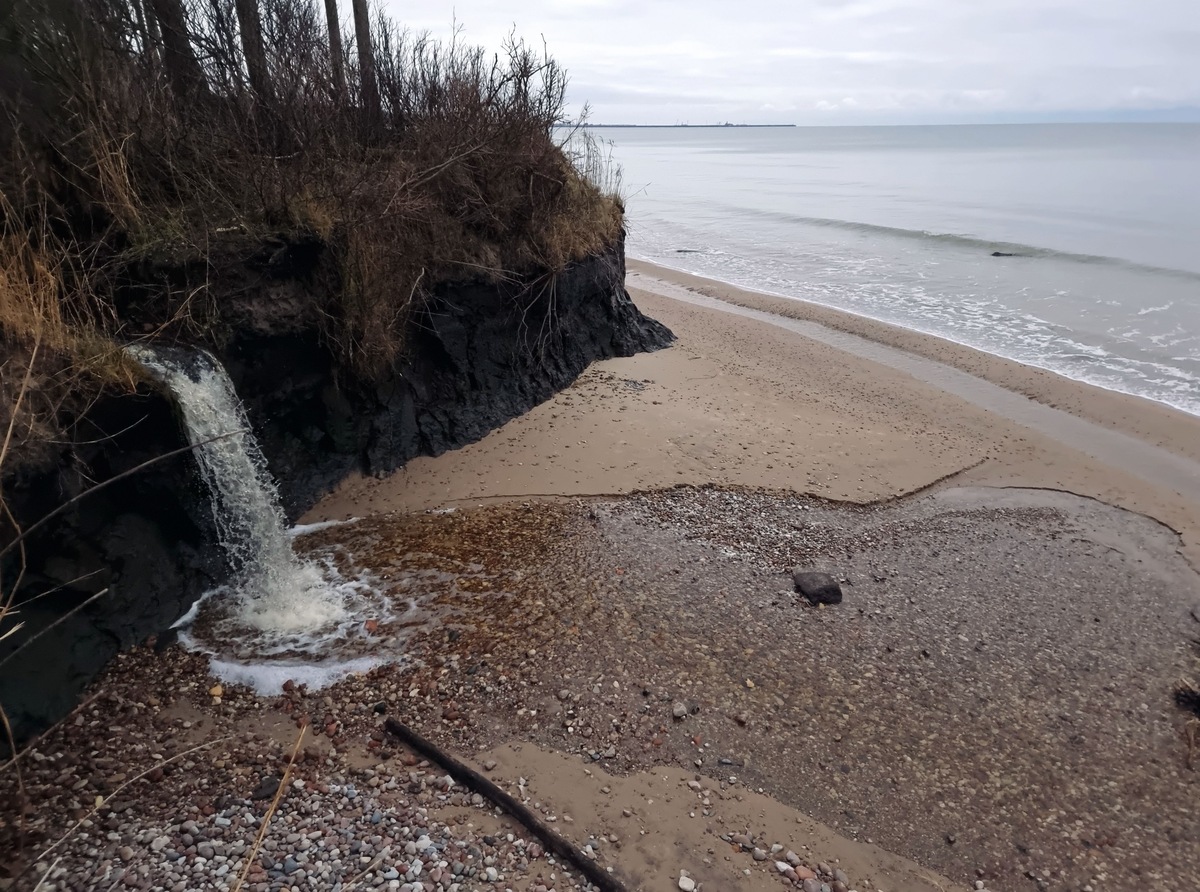
 In short
In short
This waterfall is highly unusual. Staldzenes Waterfall is one of the rare waterfalls that fall directly on the beach. But even more unusual is the rock where it has formed – this is pitch-black gyttja, a seemingly impossible basis for waterfalls.
34.9 %
GPS coordinates
Name in Latvian
Stream
Height
Drops
Width
Map of the site
If you see this after your page is loaded completely, leafletJS files are missing.
 In detail
In detail
Sand flow along the Kurzeme coast
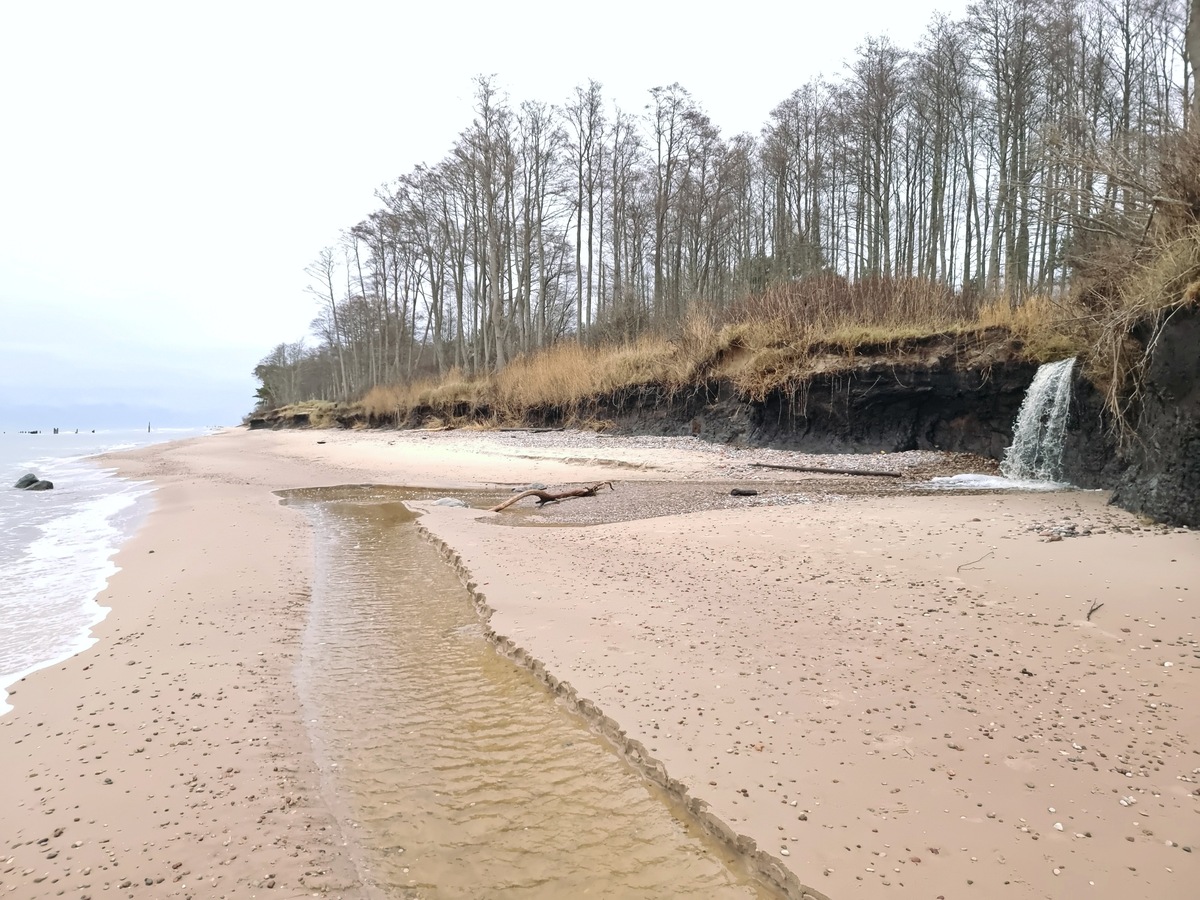
A tremendous mass of sand slowly and unstoppably moves northward along the Kurzeme coast, under the water, by the force of wind and waves. In some places, where this invisible underwater sand flow is close to the coast, the beaches are wide and rather well protected from the storms. But, if the sand flow is further away from the coast in the sea, each storm attacks the sea coast, washing away everything – forests, meadows and also, buildings.
The eternal sand flow disturbs the work in ports: the sand fills the ship channels. In medieval times ships were smaller, but now, when ships need much deeper water, something has to be done about this. Thus, in the Ventspils Port, since the early 20th century, extensive piers were built. The Northern Pier extends 1.6 km far into the sea.
Staldzene Bank and the unique cliff of gyttja
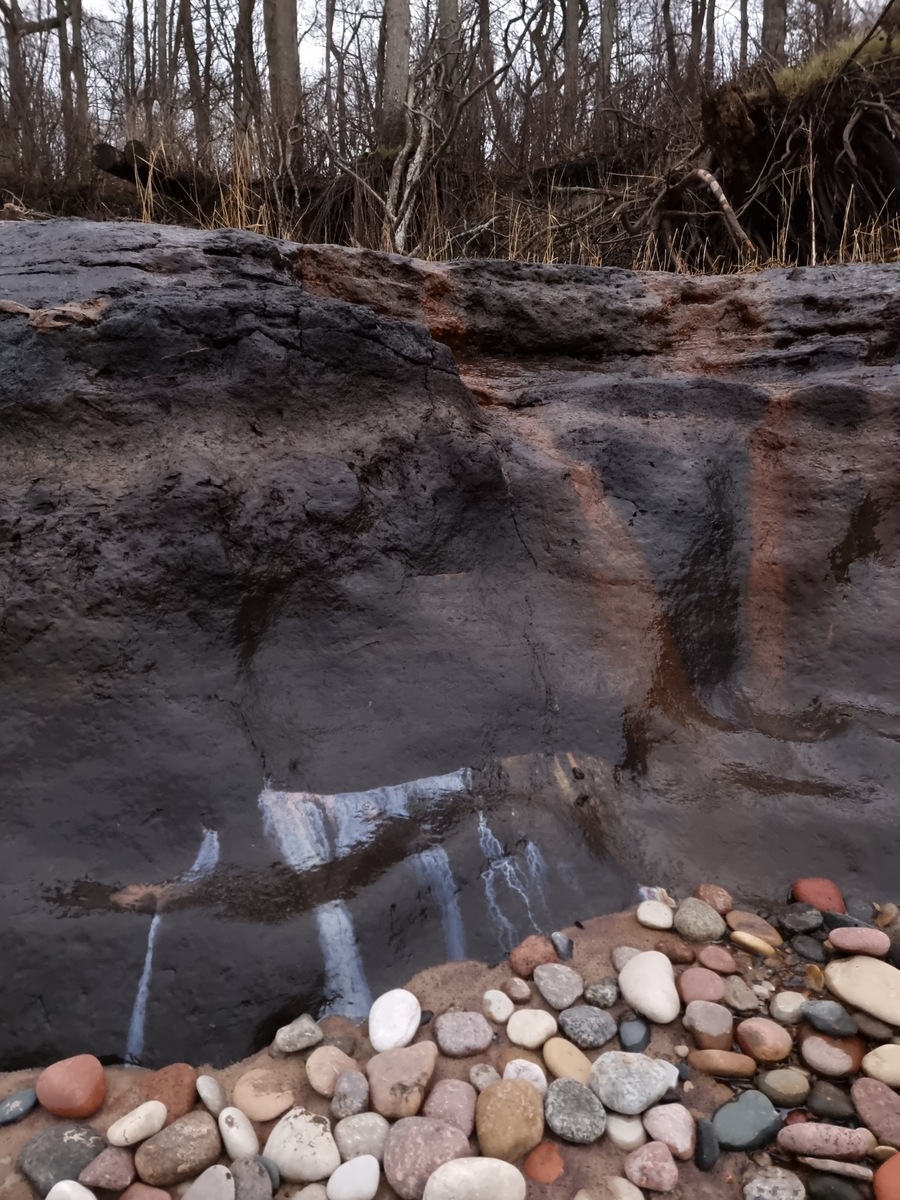
As the piers pushed away the sand flow from the coast, the sea started to wash out the coast north of the piers and gradually formed the current sea cliffs – the approximately 6 km long Staldzene Bank.
This is not a very high cliff but the exposed rocks are quite unusual. Especially weird are the cliffs closer to the piers: they consist of a dark brown, almost black substance. This is not a hard rock – it feels rather similar to rotten wood, and it is a bit elastic and sturdy.
This rock is gyttja – a partly decomposed organic material that forms under the water. While under the water, gyttja is a thick, fluid mass. Gyttja in Staldzene formed some 7.5 – 4 thousand years ago when in this location was a shallow lagoon of Littorina Sea (previous stage of the Baltic Sea). Now these sediments are above the sea level, dried out and hardened.
This unique natural landmark was selected as the Geosite of the Year in Latvia in 2021. This is also a location of archaeological finds – in 2001 the waves exposed the largest hoard of bronze items (174 pieces) in Latvia that, most likely were created by Scandinavians around 800-600 years BCE.
Staldzenes Waterfall
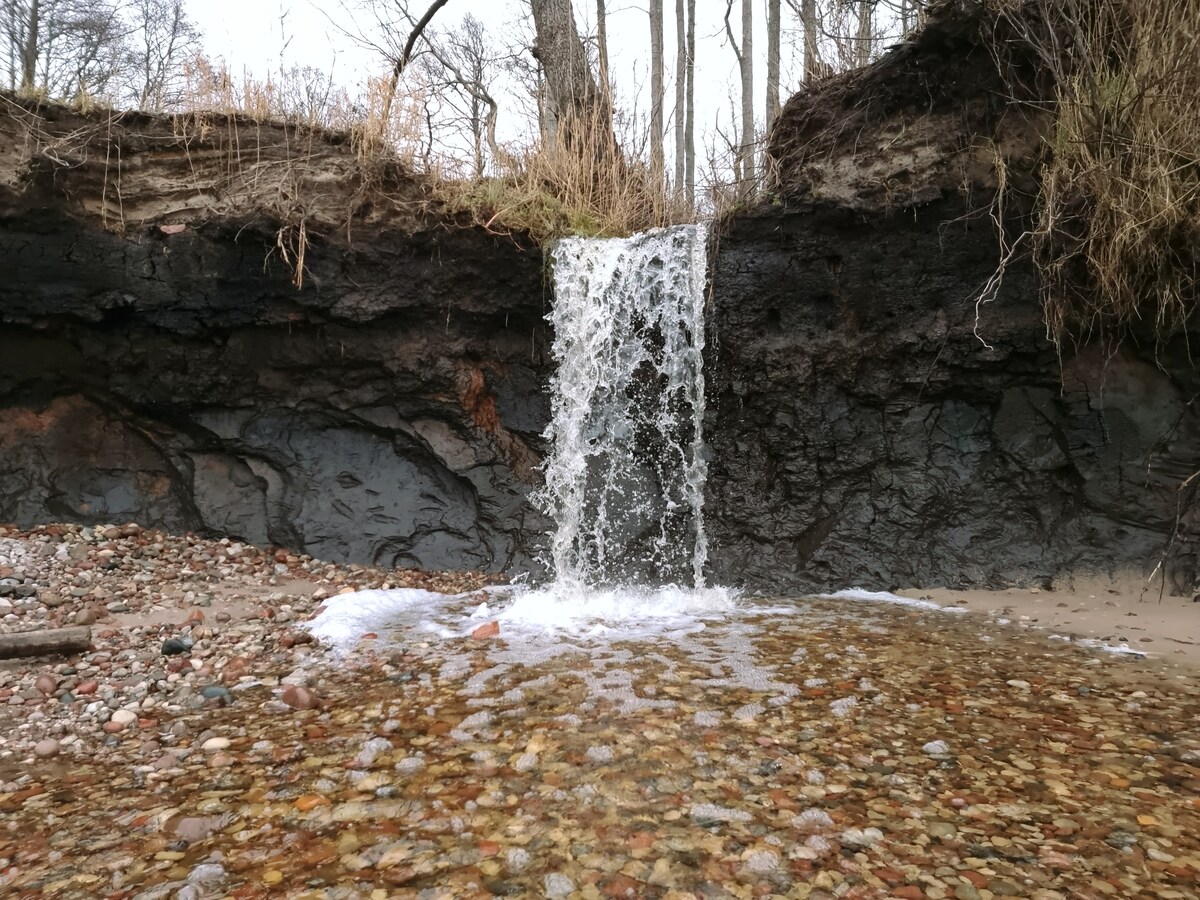
Before the construction of the piers of Ventspils Port Zemstilta Stream, most likely, was just another small stream, gradually descending into the sea.
But, as the sea started to wash out the sea coast in this location, a waterfall next to the beach started to form. Over the last 40 years, the sea coast has receded especially fast, forming the current, striking landscape with a pitch black cliff and Zemstilta Stream falling over it.
The waterfall recedes together with the coast, gradually becoming higher. In November 2023 it was 2.4 m high and 1 m wide. During the storms the water level may rise in the sea – then the stream falls directly into the sea.
Staldzenes Waterfall is a very unusual, recent natural wonder that still is little known to the public.
References
- Gada ģeovieta Staldzenes stāvkrasts slēpj arheoloģijas dārgumus. LSM.lv, 22 March 2021.
 Linked articles
Linked articles
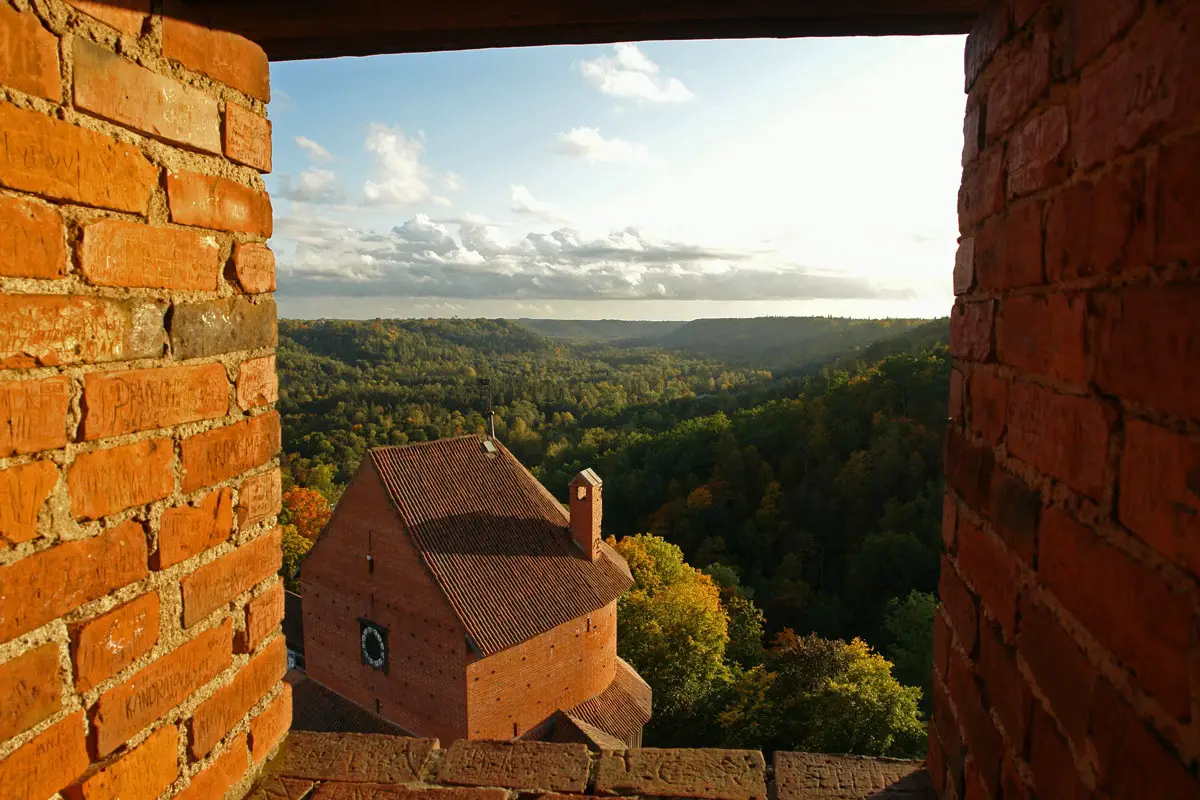
Wonders of Latvia
Highlights of Latvia are the rich architectural heritage in Riga City, numerous palaces, country houses, and castles.
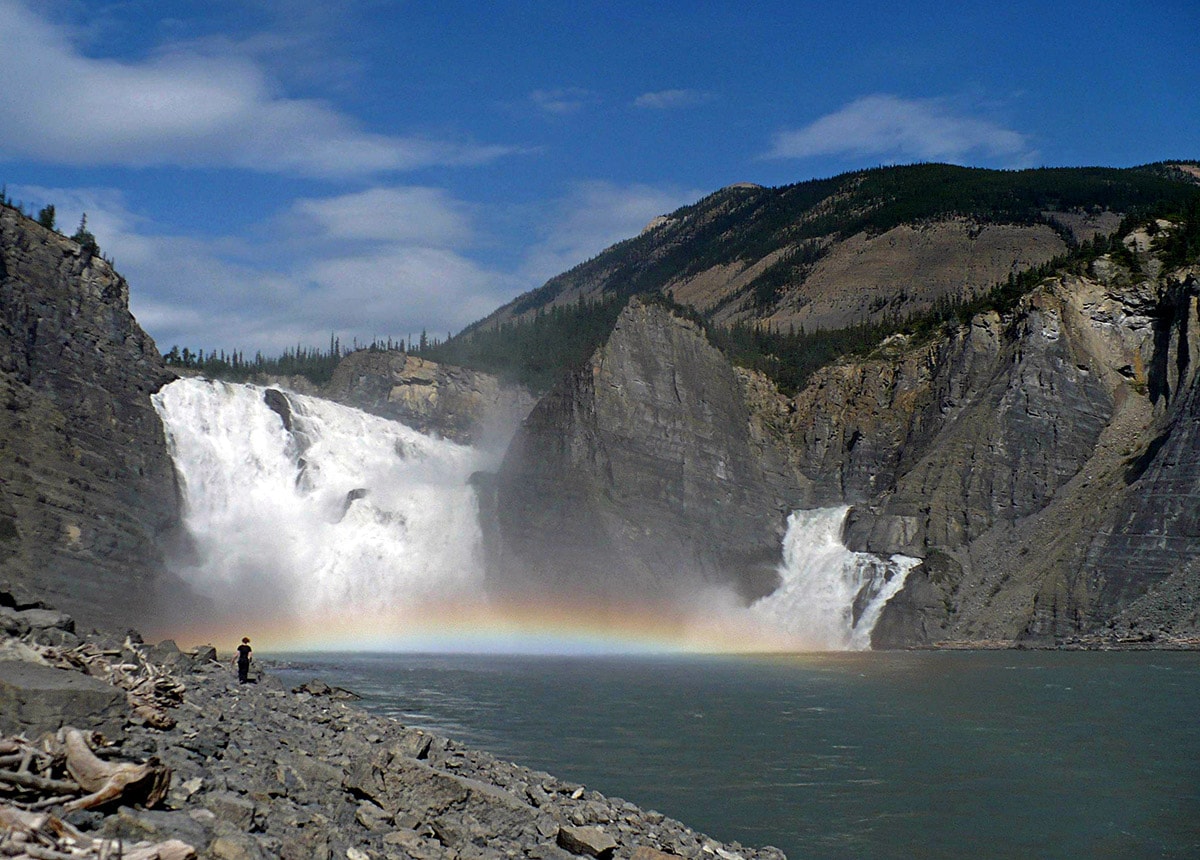
Waterfalls
Some of the most fascinating and awe-inspiring natural monuments are waterfalls or locations where a river abruptly changes its elevation.
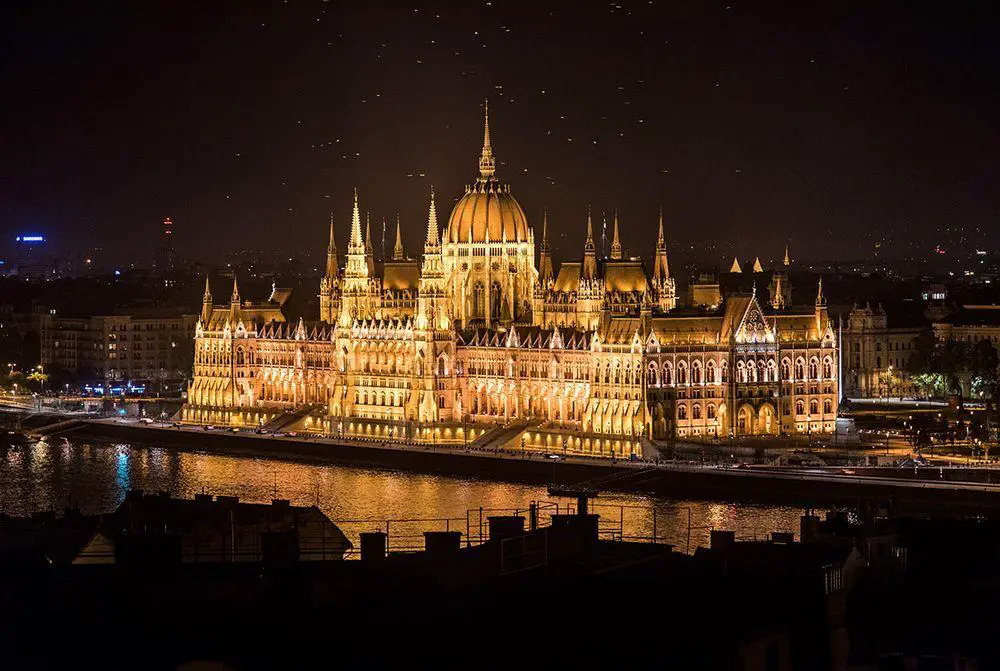
Wonders of Europe
The heritage of Europe is diverse and endlessly interesting. Incomparably rich is the wealth of European historical architecture, but this part of the world has exciting natural heritage and archaeological heritage as well.
 Recommended books
Recommended books
Latvia (Countries Around the World)
Latvia offers complete coverage of this fascinating country, including sections on history, geography, wildlife, infrastructure and government, and culture. It also includes a detailed fact file, maps and charts, and a traceable flag.
Latvia (Bradt Travel Guide)
Touring the peaceful countryside and historic towns of Latvia is made simple with this guide. Travelers will benefit from advice on how to reach long, sandy beaches and quaint provincial villages, as well as a mass of practical information. Fascinating insights into Latvian folklore, customs, language, and cuisine are provided to intrigue the curious browser and provide food for thought for travelers during their journey.


